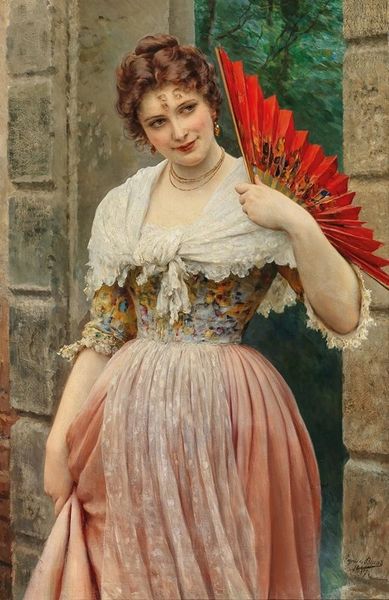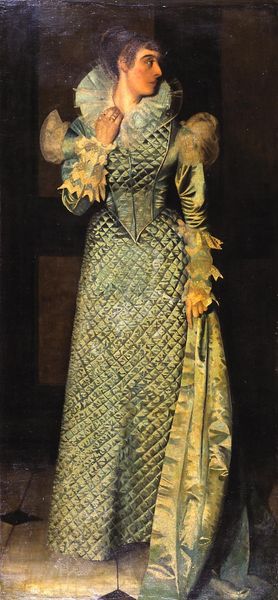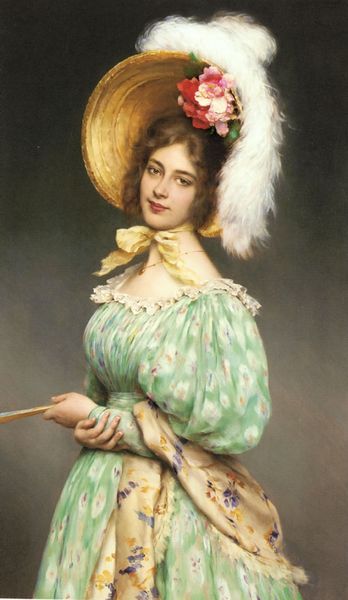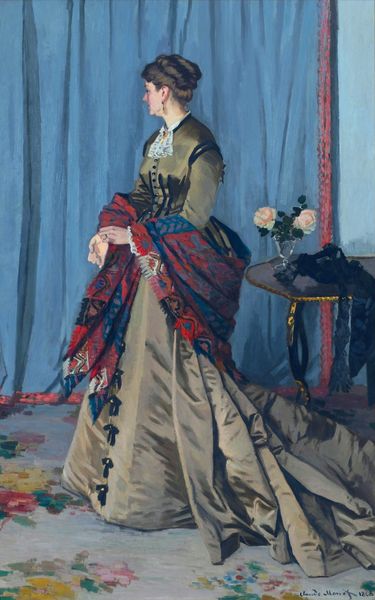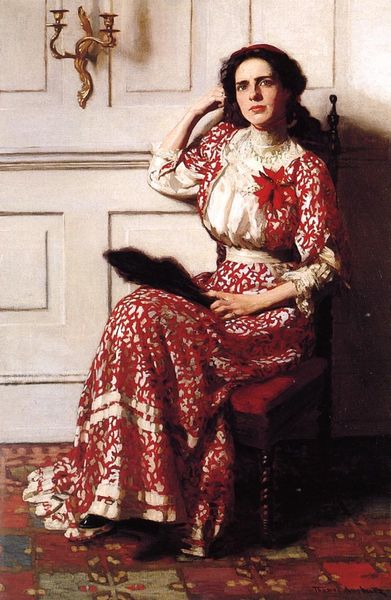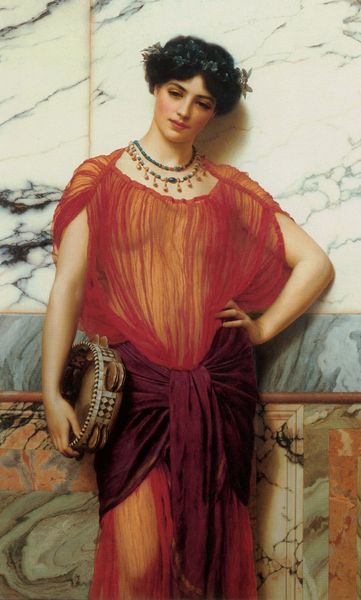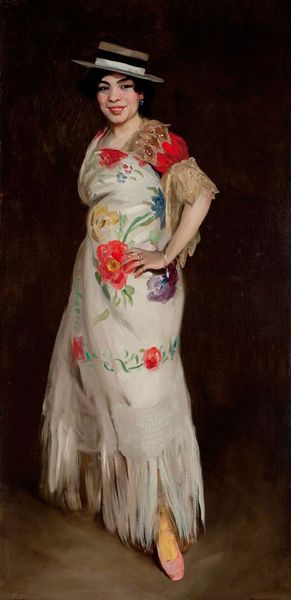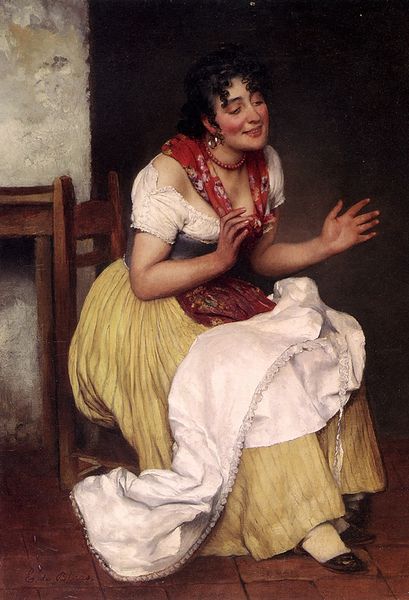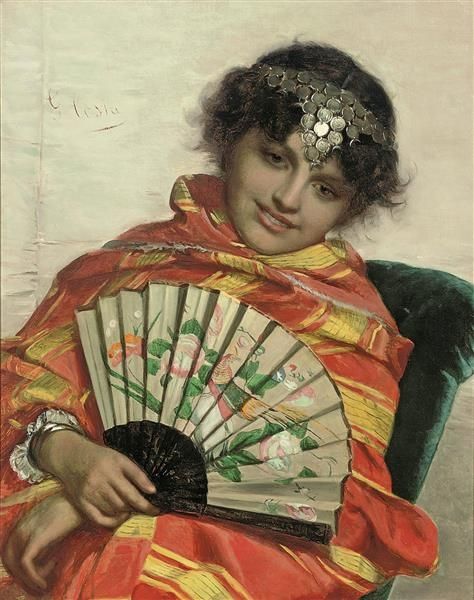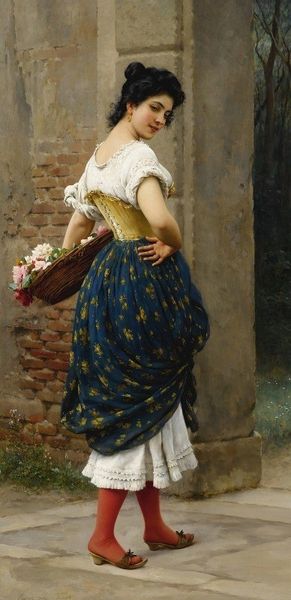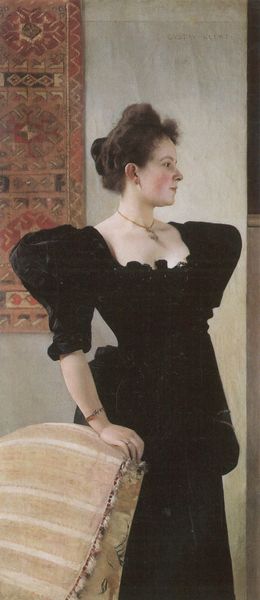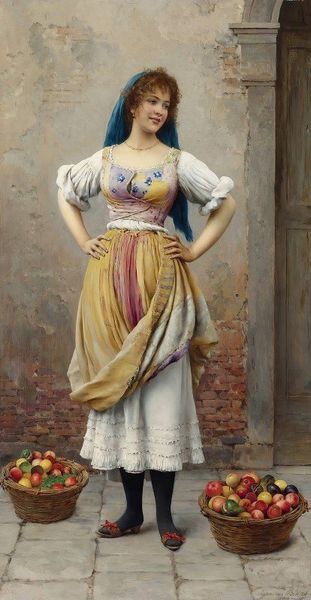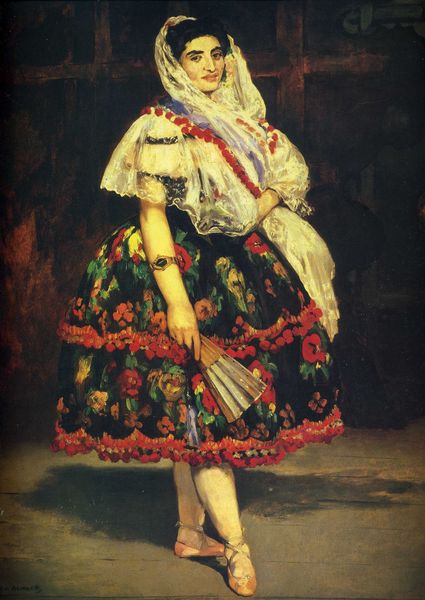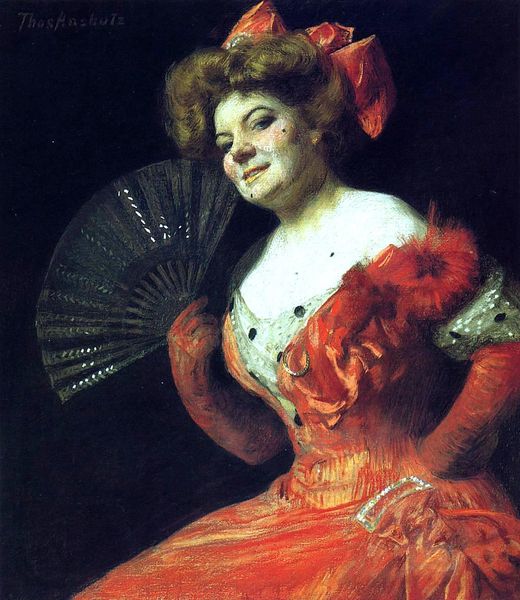
Dimensions: 66 x 100.5 cm
Copyright: Public domain
Curator: What a serene scene! We're looking at Eugene de Blaas’s painting, "Daydreaming," created in 1890. It's oil on canvas. Editor: Yes, a lovely composition. At first glance, I'm struck by how it captures a sense of quiet introspection, almost melancholic, despite the vibrant colors in her clothing and the fan. Curator: De Blaas was known for these genre scenes, particularly depicting Venetian women in idealized settings. The clothing she's wearing and the red fan situate this within a very specific cultural context, hinting at leisure and a certain social standing. It's the Gilded Age version of "soft life aesthetic". Editor: I see that. It also makes me think about the politics of representation. Who gets to be represented in art and how? Is she merely an object of beauty, or is there something more to her daydreaming? Her upward gaze feels knowing and almost defiant. Curator: That defiance is perhaps subtly conveyed. De Blaas, working within the academic art tradition, walked a fine line. He needed to please his patrons, yet his paintings offered glimpses into the lives of ordinary people, capturing details of their everyday existence and the impact of socio-economic conditions. Editor: True. The textures of the dress seem particularly deliberate, conveying both affluence and restriction. The color story also makes me curious. The contrast between the yellow bow, orange fan, and the earthy wall makes this painting very intimate and lively. Curator: Absolutely. There’s an artful manipulation of color and light at play, typical of the Realist and Romantic elements within his academic approach. It catered to popular tastes. De Blaas himself came from an artistic family with academic ties that made the road for exhibiting paintings, and gaining traction, very accessible. Editor: Considering the historical context, it's interesting to ponder her own power or lack thereof. What dreams are deemed acceptable or achievable for someone in her position, visually striking and positioned in the height of aesthetic appreciation, in 1890, I mean? Curator: That’s a poignant question. Ultimately, “Daydreaming” operates on multiple levels, as it is both an enchanting scene and an echo of a time shaped by strict social norms and budding class-based cultural shifts in the art world. Editor: Exactly. A valuable reminder of art's complex relationship to the real world.
Comments
No comments
Be the first to comment and join the conversation on the ultimate creative platform.
